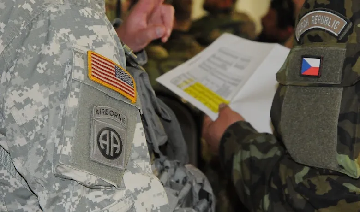NATO Interoperability When Targeting Indispensable Objects
by Cate Belbin
Editor: The following comments were received in response to the subject article.
This is an interesting “Articles of War” piece, especially when it comes to the ‘starvation’ of civilian populations. There is yet another issue when it comes to dual-purpose supplies or foodstuffs, I reckon, especially considering the wording in the US Department of Defense Manual and the legitimate starvation of enemy forces. My reading of this would indicate that, prima facie, because a field of crops could be used to supply and/or sustain enemy forces, it would be a legitimate target in accordance with the American perspective.
Also, there is something to be said about how we conventionally perceive ‘starvation’. Tangible, physical starvation is one thing, but there are some new ways of thinking with respect to civilian populations being ‘starved’ of telecommunications/accurate information about the armed conflict. Whether or not internet access could be considered ‘indispensable’ to civilians is definitely something that will be debated, but it is an interesting thought to ponder in the context of contemporary armed conflict and the world’s connectivity. When I state this, I mean to argue that access to social media may not be indispensable but being able to access banks and/or automated teller machines would be, as this would enable and/or facilitate access to critical supplies, for example. We know that trillions of dollars flow through undersea cables every day, and if there are connectivity issues, civilians are unable to access funds. This is a live issue with the recently damaged undersea cable in the Baltic Sea (“Denmark and Norway continue to investigate damaged cables in Baltic Sea“), and it is possible that there is below threshold/hybrid warfare occurring in the Baltic Sea to test the response of NATO and/or EU allies, as undersea cables are increasingly being considered as ‘critical infrastructure’.
Another angle that is interesting is the obligation not to destroy the environment, pursuant to Article 55 of AP 1 of the Geneva Conventions (1949). Does destroying a crop field create widespread, long-term and severe damage to the environment? Perhaps, depending on the method of warfare engaged. I asked a question of my Law of Armed Conflict (LOAC) professor during my Master of Laws (LLM) about the Law of Naval Warfare and the obligation not to destroy the environment and whether or not there is an obligation not to destroy the marine (natural) environment. For example, we know that coral reefs are integral to the health and proper functioning of the marine environment, and if damaged, it can take decades, if not centuries, for coral reefs to recover. How should Article 55 be interpreted in the context of the marine environment? According to my perspective, there appears to be an important focus on the obligation not to destroy the environment, as conventionally applying to terrestrial environments. Depending on where an armed conflict is occurring, there are billions of people who are reliant upon the oceans for survival (i.e., over one billion people are reliant upon seafood and/or fish as their primary source of protein). Damage to coral reefs could have reverberations on the success of coastal/local fisheries, which could create widespread, long-term and severe damage to the natural marine environment. Another example that I have been thinking about it the mining of waters and the potential harm that could befall the marine environment if a mine explodes. Does this violate the obligation not to create widespread, long-term, and severe damage to the natural environment? I have not seen much literature about this obligation in the context of the marine environment.
Cate Belbin, B.A., J.D., LLM, is a PhD Candidate at the Schulich School of Law, Qanittaq Clean Arctic Shipping Initiative, Dalhousie University. This work is the sole opinion of the author and does not necessarily represent the views of Dalhousie University, the Royal United Services Institute of Nova Scotia, the Canadian Armed Forces or any government department or agency.



